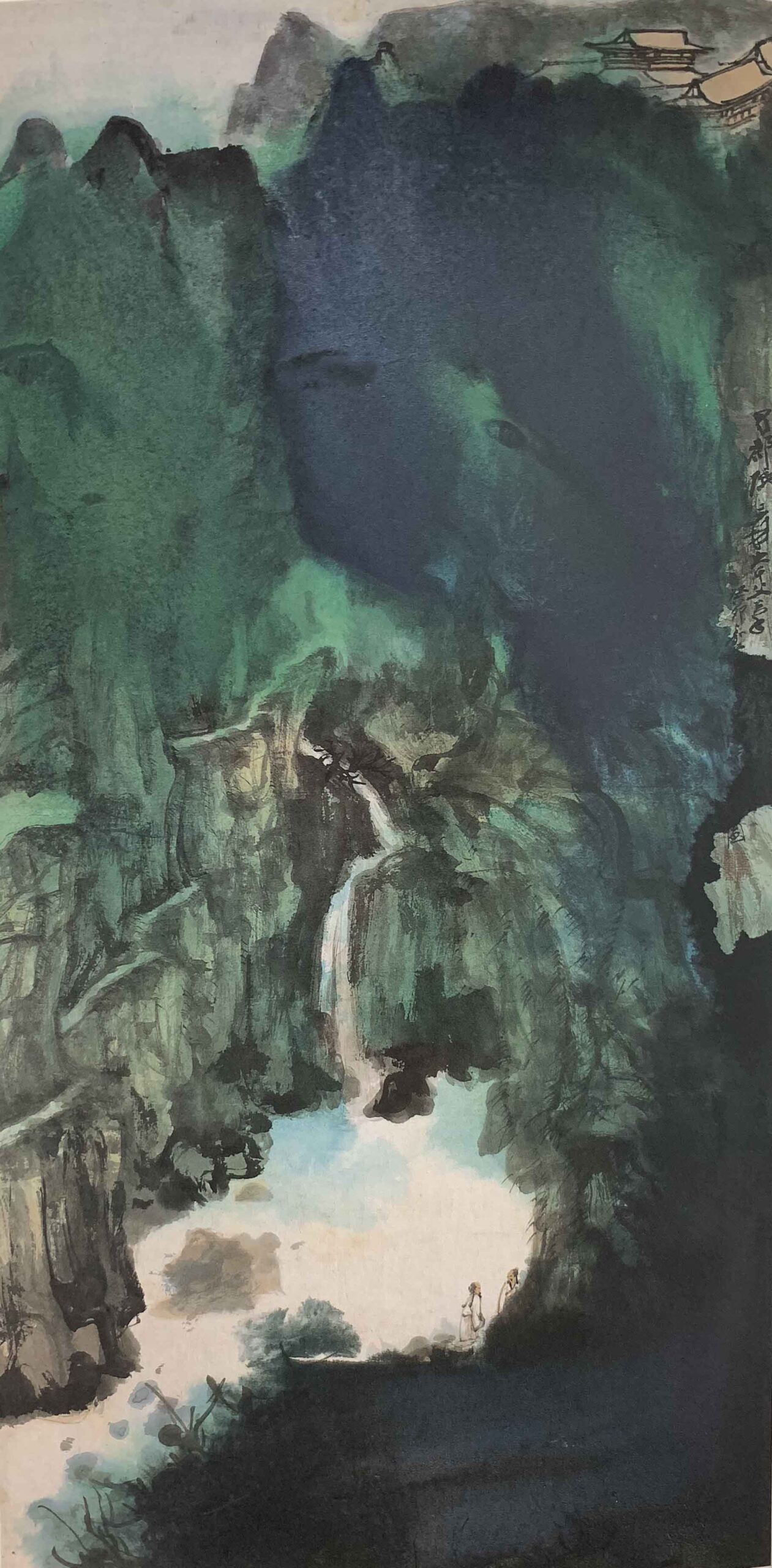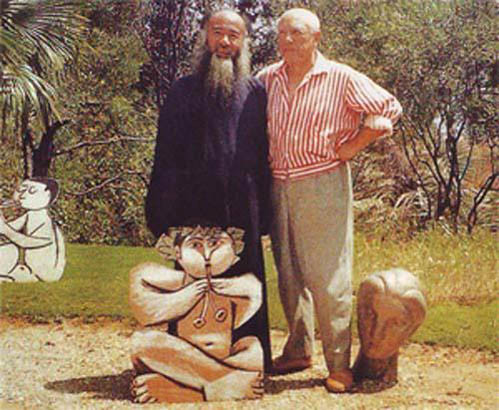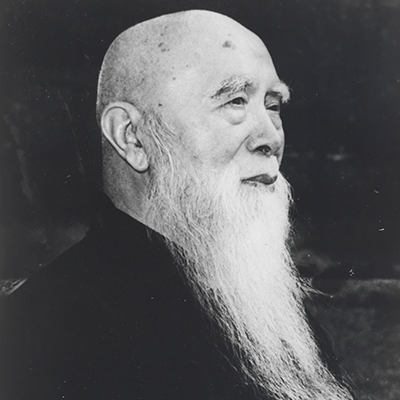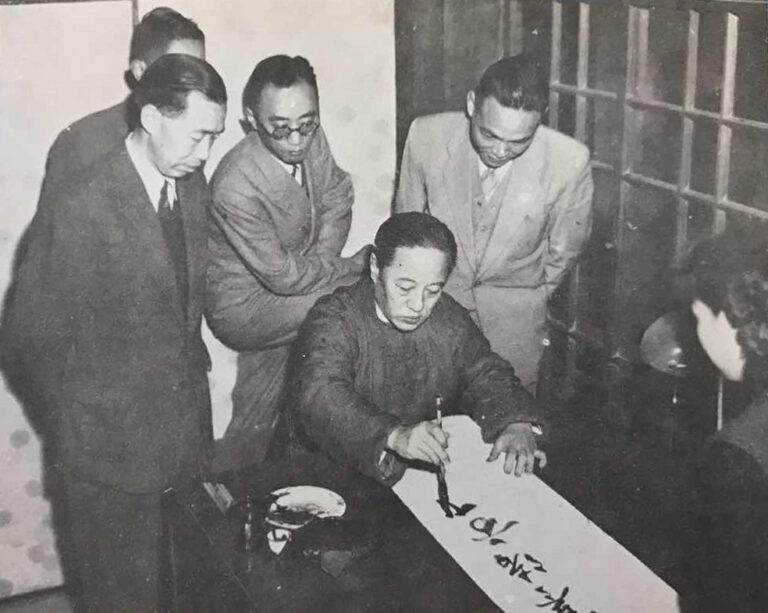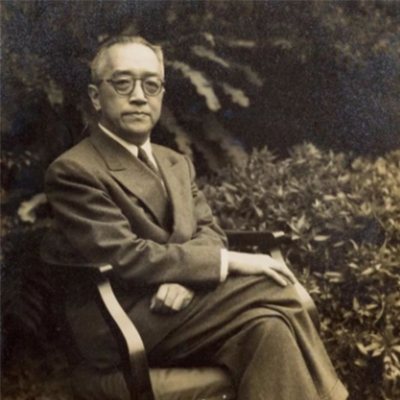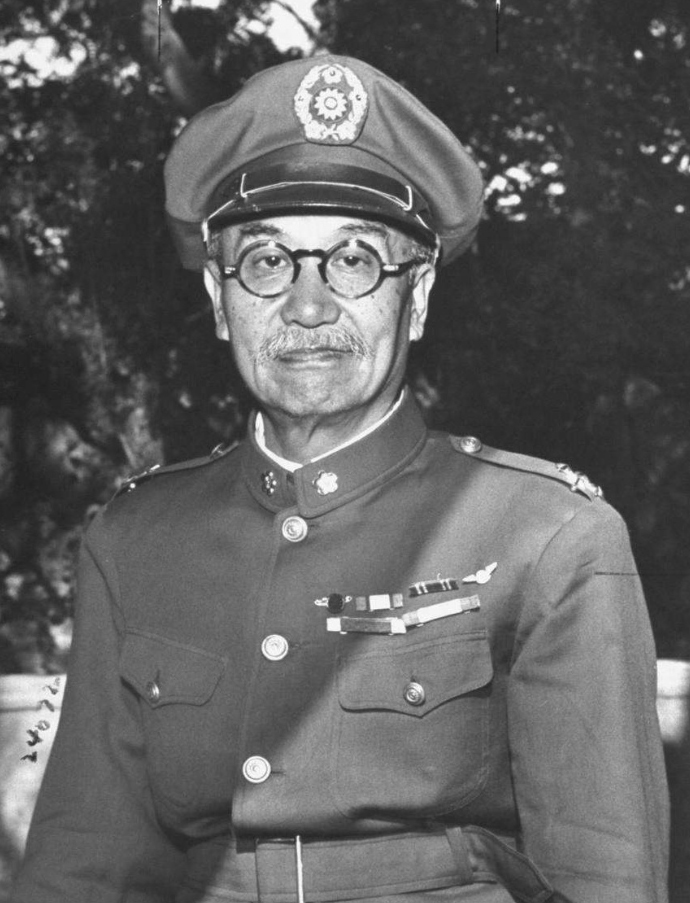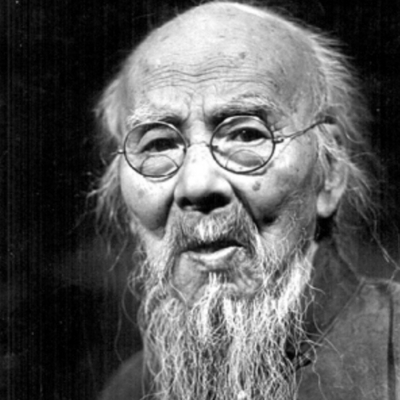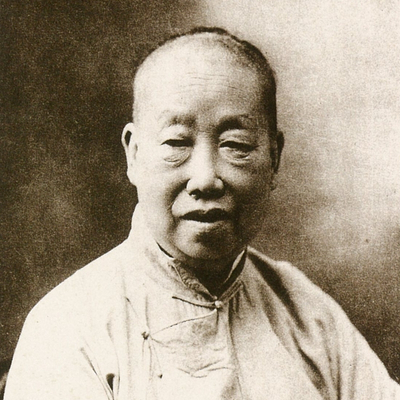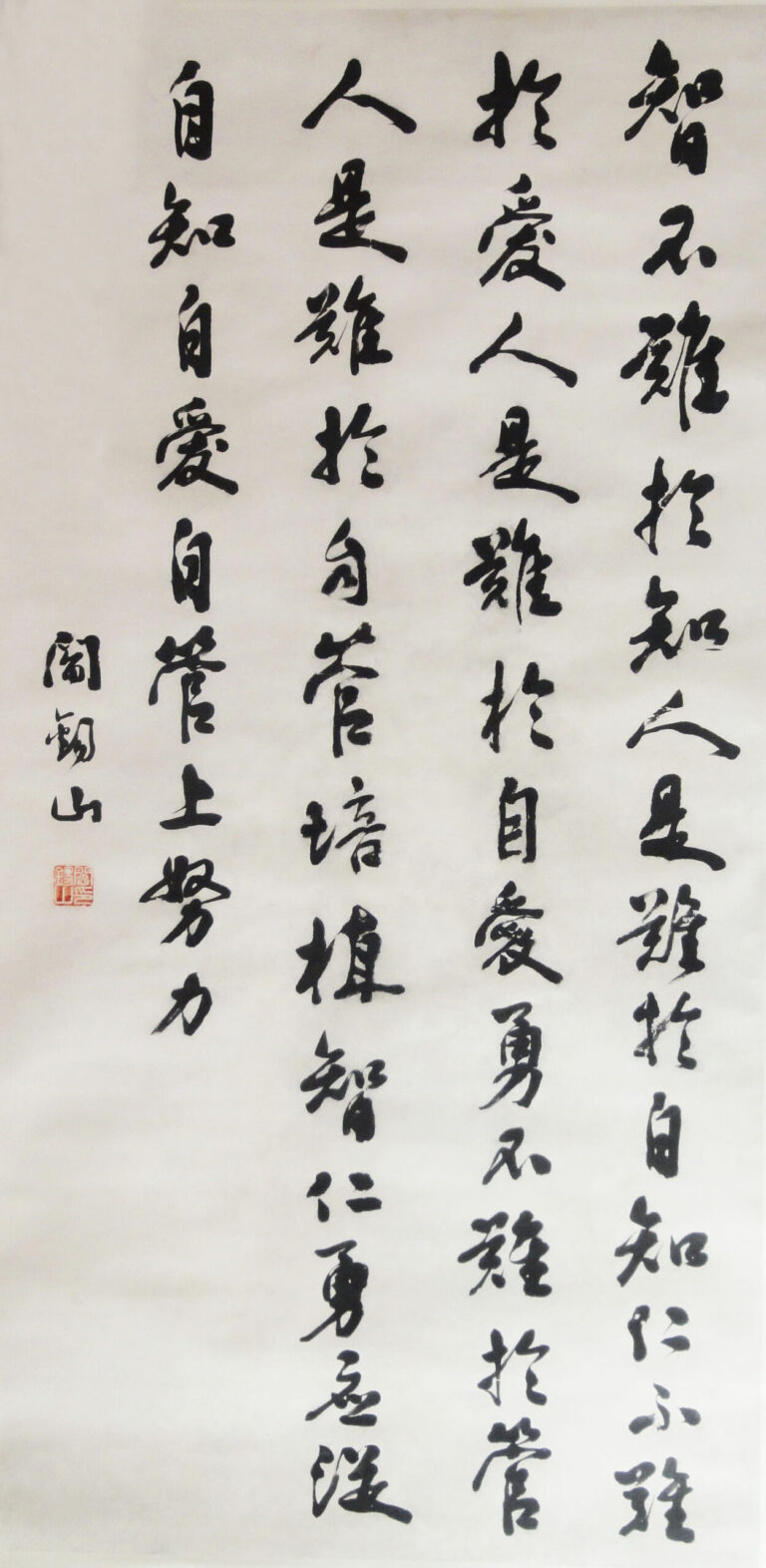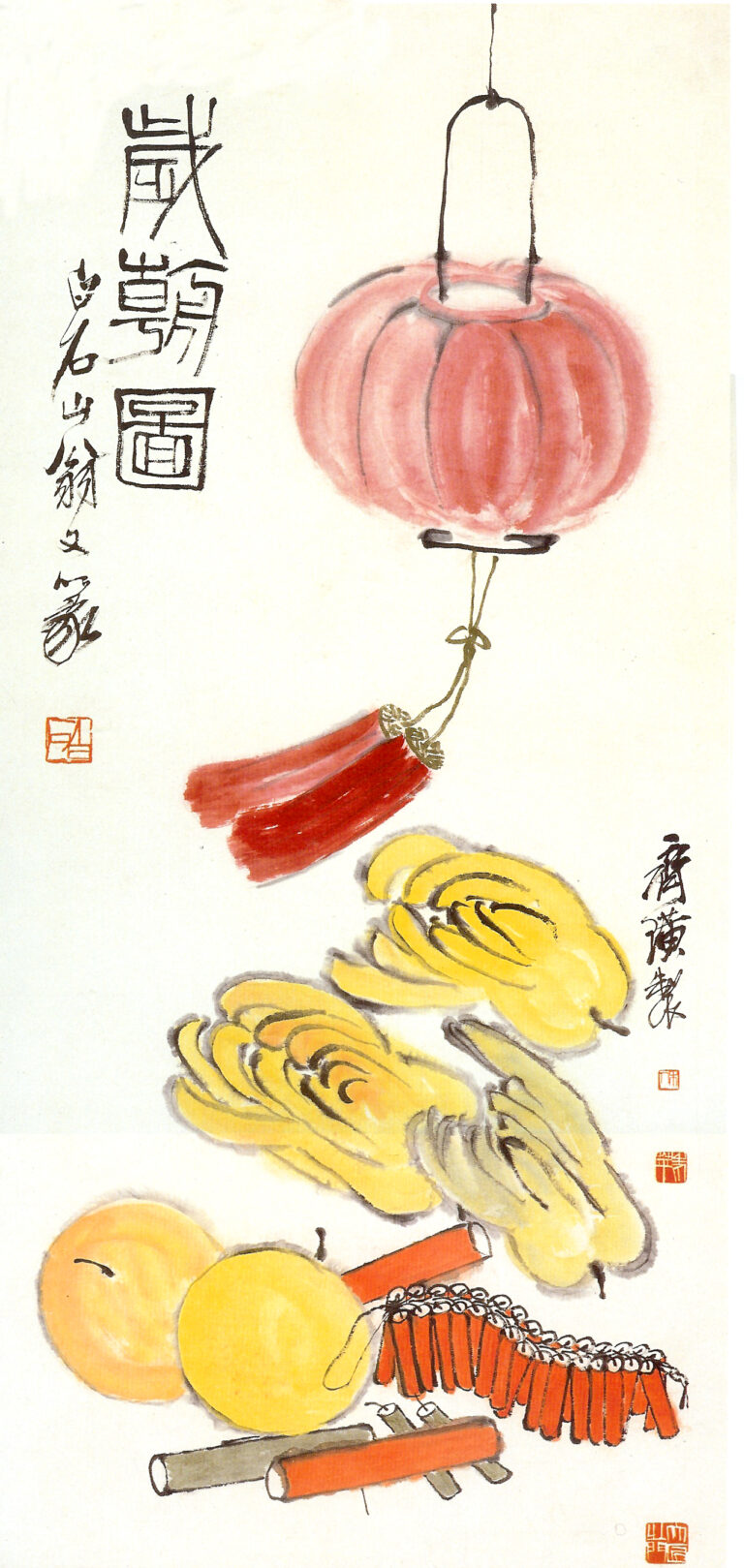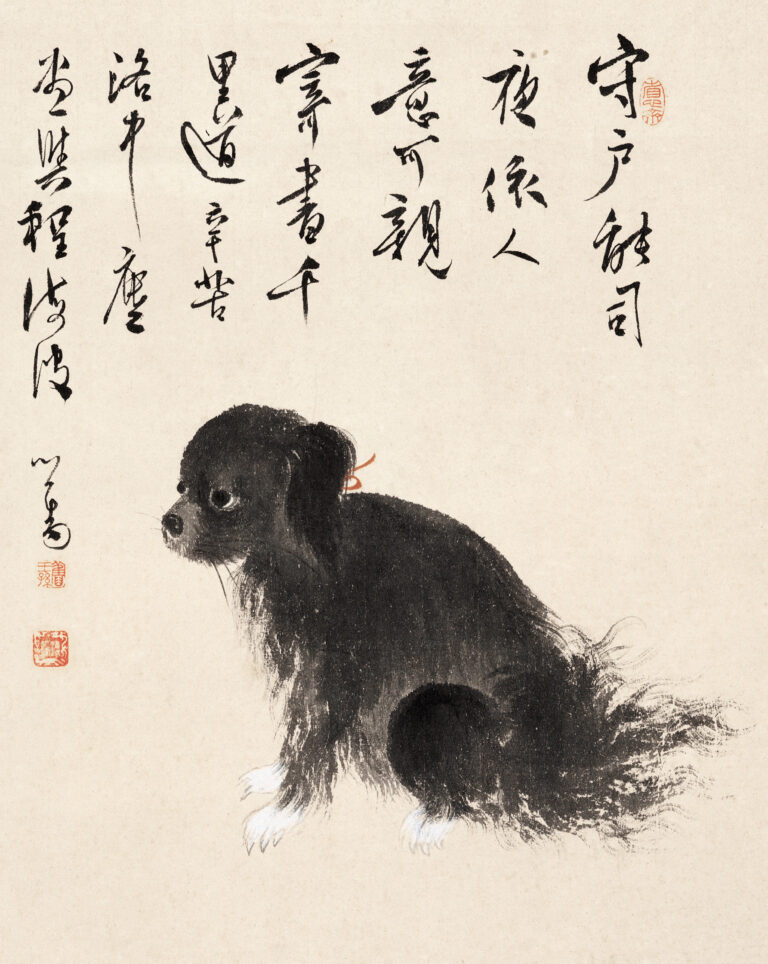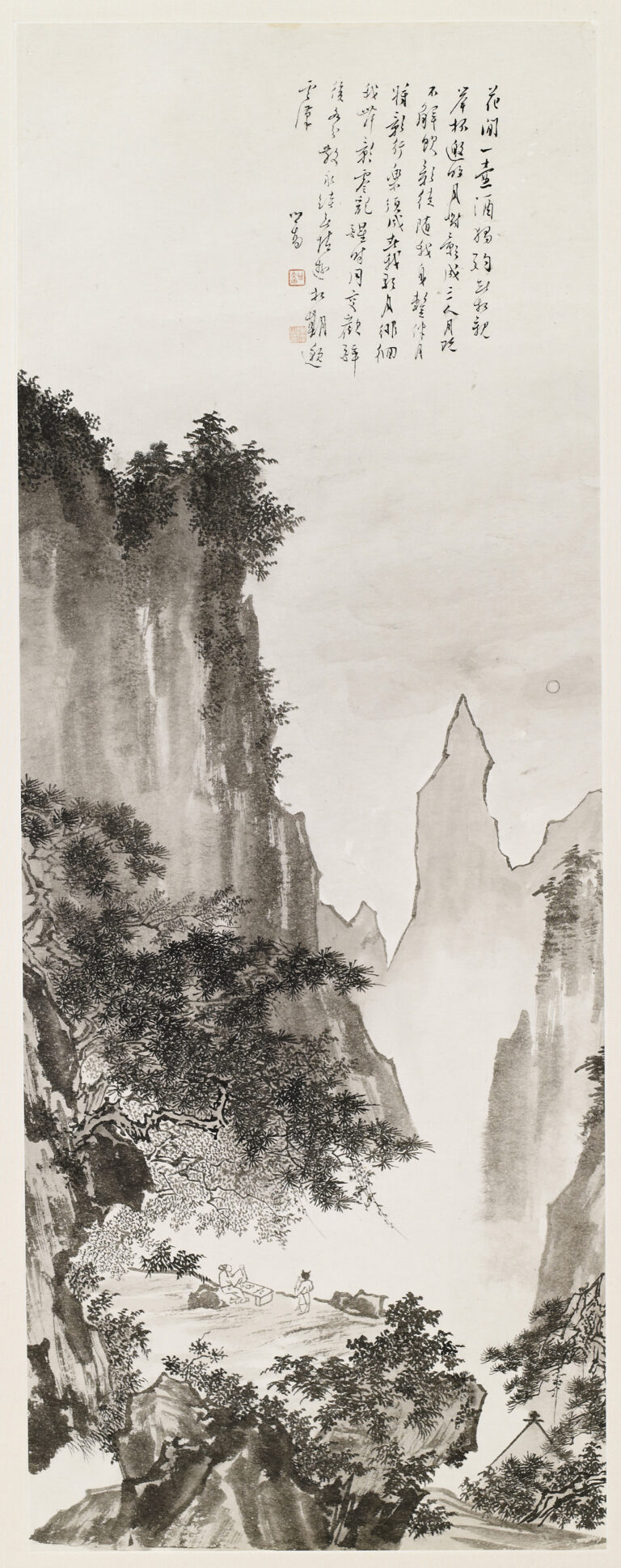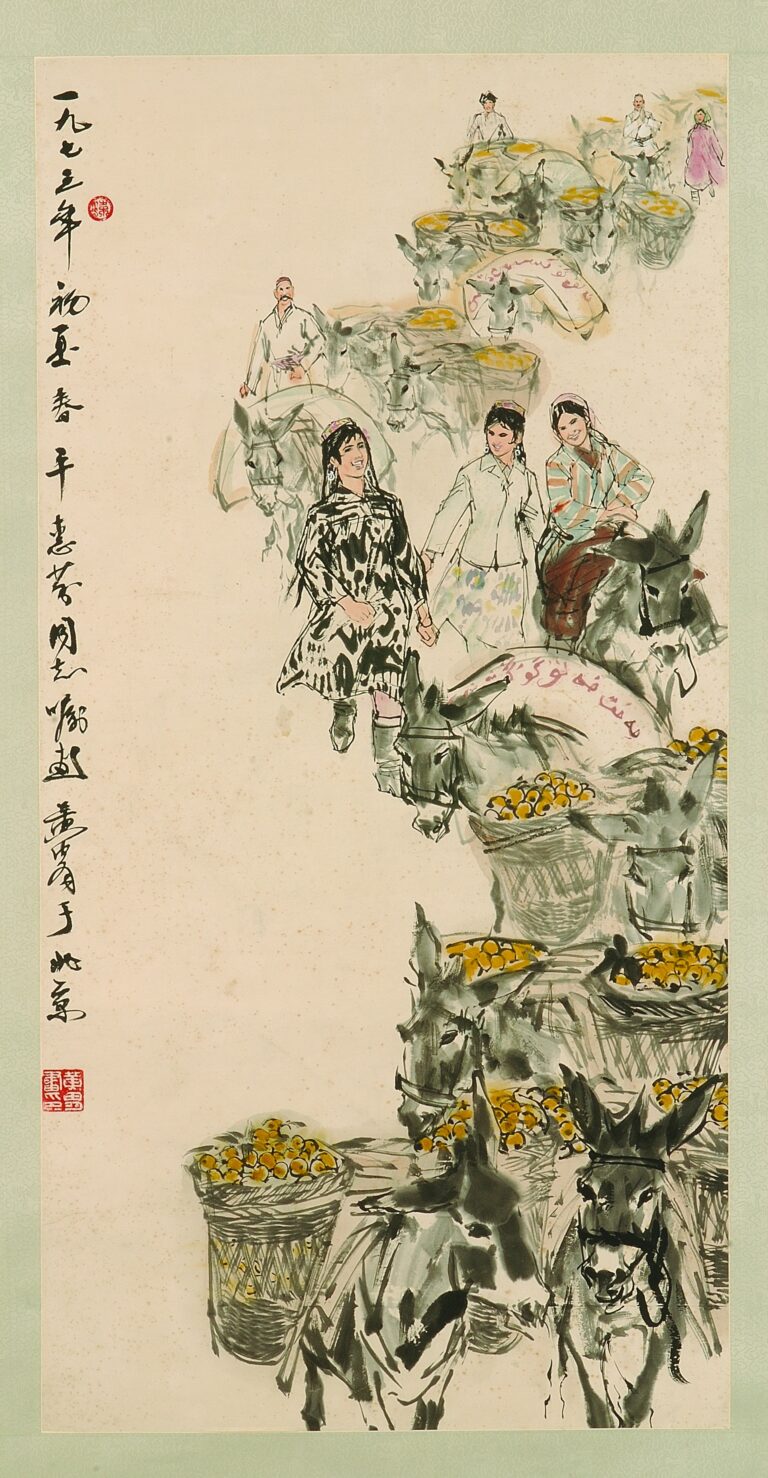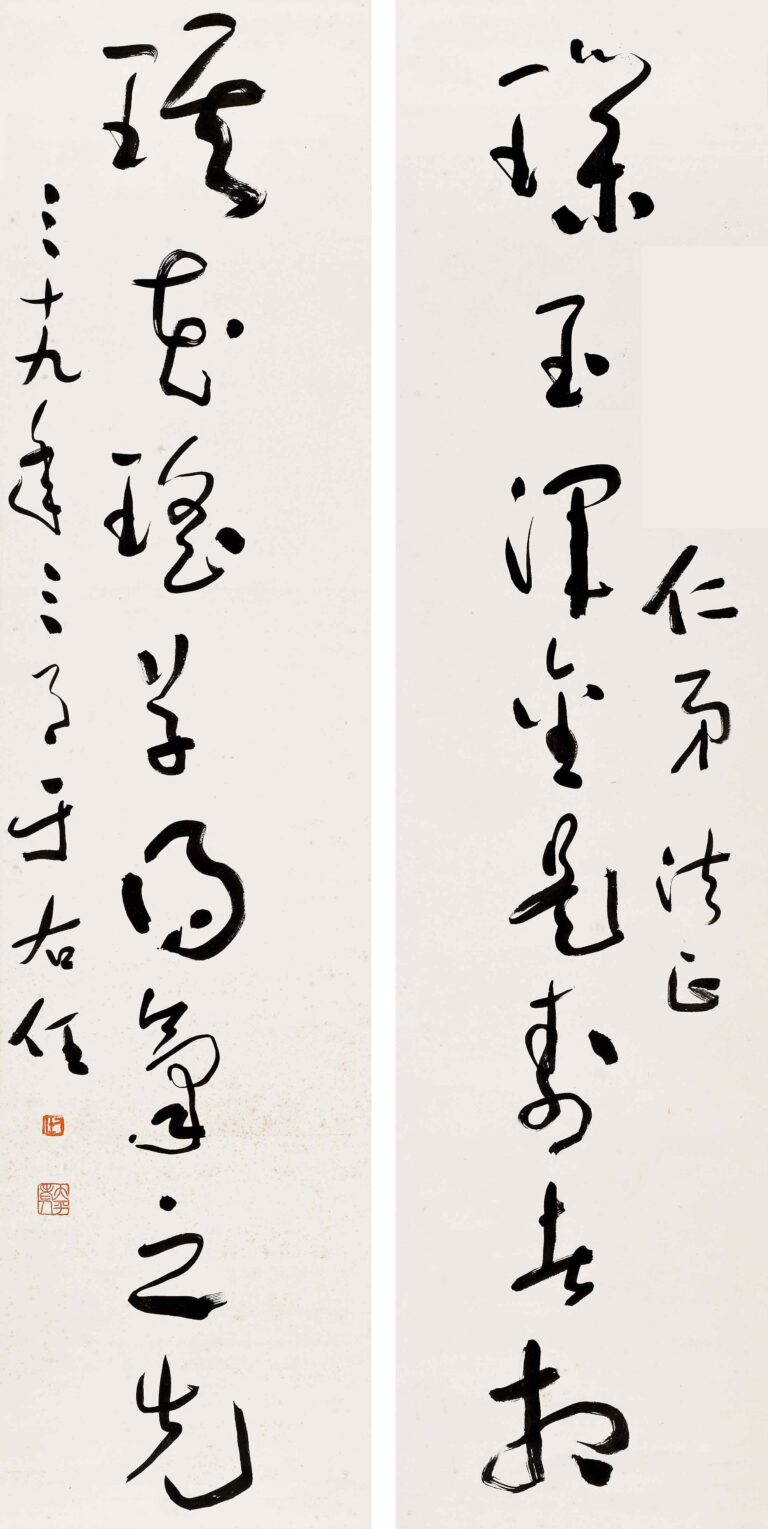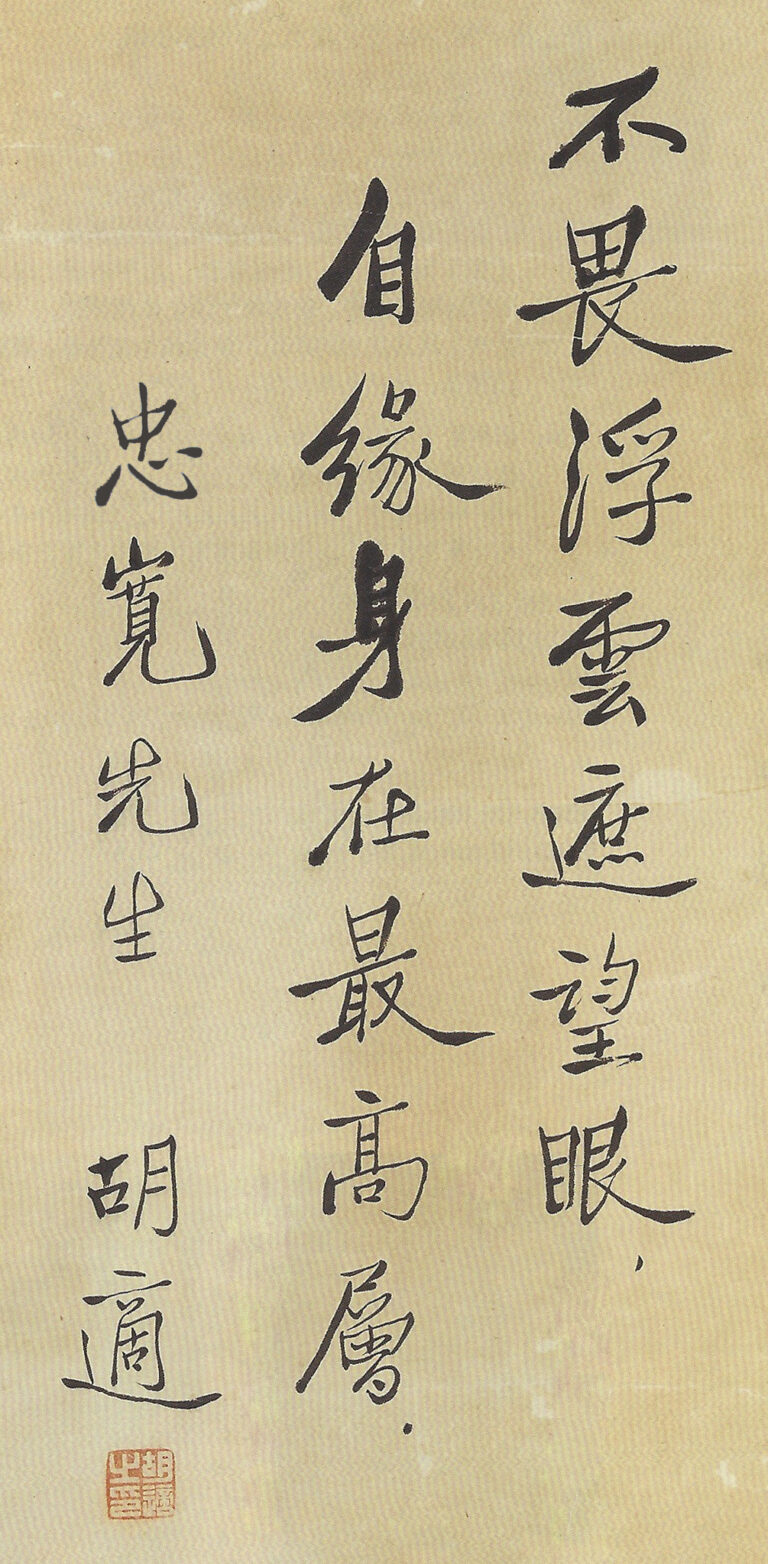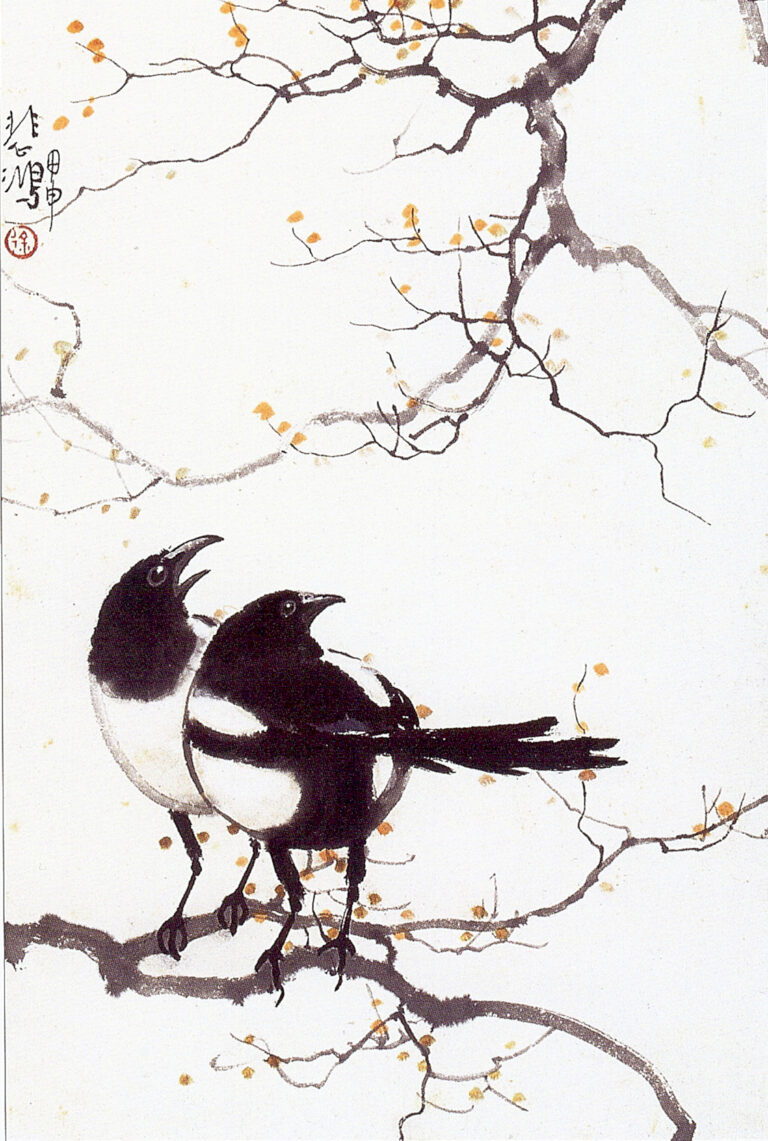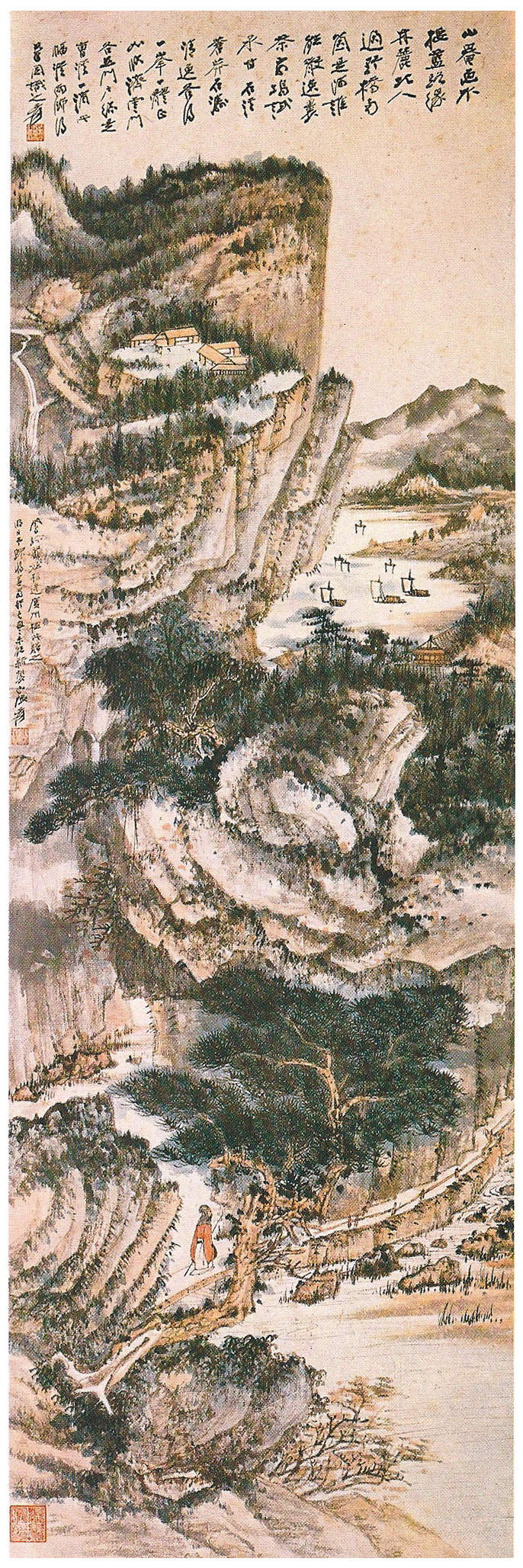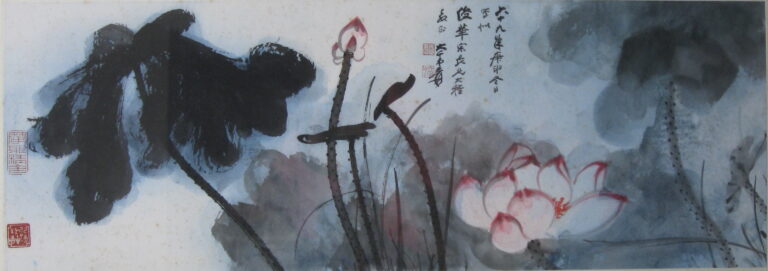Zhang Daqian (1899-1983), real name Zhang Zhengzheng, later changed his name to Zhang Yan, Zhang Xuan, character Ji Yu, No. 1 Thousand layman, Zhai Ming Fengdangtang, from Neijiang, Sichuan, ancestral home of Yingxiu, Sichuan. As one of the most influential artists in the Chinese painting scene in the 20th century, Zhang Daqian has achieved a grand artistic vision that spans ancient and modern times and integrates China and the West with his unique artistic cultivation of poetry, calligraphy and painting, deep traditional skills and groundbreaking artistic style.
His painting career spans more than 60 years, and the subject matter of his works covers landscapes, characters, flowers and birds, all of which are exquisite. From splashing ink and color to copying Dunhuang murals, Zhang Daqian opened a new page in Chinese art history with a diverse and reformed artistic vocabulary. Together with Qi Baishi, he is called "Nan Zhang Bei Qi", and with Pu Xinyu and Huang Junbi, he is called "Three Crossing the Sea". Zhang Daqian's name is still synonymous with the legend and glory of Chinese painting.
Childhood pedagogy and Enlightenment Foundation
Zhang Daqian was born on May 10, 1899, with a wealthy family and a strong literary atmosphere. Her mother, Zeng Youzhen, is a talented girl who specializes in painting and embroidery. Since she was a child, Zhang Daqian has forged an indissoluble bond with pen and ink since she was a child. At the age of eight or nine, he was able to copy ancient paintings, his pen skills began to show, and he showed extraordinary artistic talent.
When he was a teenager, Zhang Daqian not only read a lot of books, but also dabbled in poetry and calligraphy. This kind of deep foundation of Chinese studies laid down from an early age has become an important foundation for him to cross the world of painting and calligraphy in the future. Zhang Shanzi, the eldest brother in the family, is also obsessed with painting and calligraphy. The two brothers work hard for each other and climb the peak of art together.
Travel east to Japan and absorb exotic nutrients
In 1917, at the age of 18, Zhang Daqian went to Kyoto, Japan to study dyeing and weaving techniques. During this period, he visited Ukiyo-e, lacquer art and Oriental art, broadening his horizons. This experience of staying in Japan allowed him to come into contact with the differences and integration of Chinese and western art for the first time, and it also foreshadowed a variety of perspectives for his future creations.
Although he majored in dyeing and weaving, Zhang Daqian continued to work hard when he was in Japan, studying the masterpieces of the ancients and ancient paintings. He knows very well that tradition is the soul of Chinese painting, and any innovation must start from a solid foundation.
Returning home to study art, famous teachers gather
After returning from Japan, Zhang Daqian joined the calligraphy and painting masters Zeng Xi and Li Ruiqing in Shanghai, and systematically studied poetry, calligraphy and painting. Zeng Xi was a master of calligraphy and painting in the late Qing Dynasty, with a strong pen; Li Ruiqing was good at both calligraphy and painting, and had a deep education. Both teachers advocated "painting with books" and "the same origin of calligraphy and painting", which had a profound influence on Zhang Daqian's later style of integrating calligraphy and painting with equal emphasis on poetry and calligraphy.
At this time, Zhang Daqian was no longer just copying the ancients, but also began to explore his own artistic language, pursuing the creative concept of "I am me, I have my own".
"Fengfengtang" and the style of painting in the early years
In the early 1920s, Zhang Daqian and his second brother Zhang Shanzi jointly created the "Great Wind Hall" in Shanghai, and used this as a festival to start their own artistic era. The works of the Great Wind Hall are known for their heavy color, inheriting the style of painting in the Song and Yuan dynasties, and taking the charm of pen and ink in the Ming and Qing Dynasties.
Zhang Daqian is good at painting figures and ladies, with delicate lines and vivid expressions; landscape painting has a broad composition, distinct ink colors, and a bold and powerful style after its first appearance. During this period, he had many contacts with literati and aristocratic people in Shanghai, laying the foundation for artistic and cultural contacts.
The trip to Huangshan and the Enlightenment of Shitao
In 1927, Zhang Daqian and his brother Zhang Shanzi set foot in Huangshan for the first time, feeling the changes of strange peaks, strange stones and the sea of clouds. The trip to Huangshan had a profound impact on Zhang Daqian. He painted poetry clouds in Huangshan: "Huangshan is absolutely top-notch in the rain, and Huangshan is absolutely top-notch in painting. "Since then, Huangshan has become a common subject under his brush.
The trip to Huangshan also prompted him to immerse himself in the world of pen and ink of Shitao and the Eight Great Mountain People, so as to gradually step out of the path of heavy painting in the past, and turn to a bold and freehand creative style with vivid charm.
Copying from Dunhuang, reconstructing the world of color
During the War of Resistance, Zhang Daqian went to Dunhuang and went deep into the Mogao Grottoes to copy murals for more than two years, copying more than 200 works. This experience not only allowed him to have a grand narrative dialogue with the millennium murals, but also gave him a new understanding of the use of colors in Chinese painting.
The heavy color and grandeur of the Dunhuang murals deeply shocked Zhang Daqian. After returning to Shanghai, he began to break through the ink-based ink painting, integrating the brilliant colors of Dunhuang murals into the creation of landscapes, and finally created a unique style of splashing color and ink painting.
"Splashing ink and Splashing Color": A colorful Chapter in Art Reform
In his later years, Zhang Daqian's vision declined due to eye disease, but he did not stop his artistic creation. On the contrary, with his bold brushstrokes and indulgent colors, he created a new chapter in the style of splashing ink and color painting. This kind of painting method is not only derived from the technique of splashing ink in the Tang and Song Dynasties, but also combines the boldness of color and layering of Western abstract expressionism, and has become a major breakthrough in the history of Chinese painting.
His colorful landscapes such as "Love Trace Lake", "Yangtze River Wanli Map", and "Lushan Map" are full of weather and colorful. They have the charm of traditional literati painting, as well as a sense of the times and the free spirit of modern art. Zhang Daqian said: "The work of splashing color takes advantage of the situation, takes its nature, and gets its natural interest. "It is this majestic artistic concept that conforms to nature that allows him to exert unparalleled vitality at the age of eighty.
Reputation and exchange in the international painting world
Zhang Daqian's artistic footprints are all over the world. After 1949, he lived in India, Argentina, Brazil, and the United States successively, holding painting exhibitions and spreading the style of Chinese art. In 1956, in Nice, France, the famous "East-West art meeting" was held with the Spanish painter Picasso, which became an important chapter in the art exchange between East and West.
His painting exhibitions have repeatedly gained a high reputation in Paris, New York, London, Geneva, Tokyo and other places. In 1958, he won the Gold Medal of the New York International Academy of Arts with "Begonia" and was hailed as the "World's Great Painter". All of this proves that Zhang Daqian has successfully brought traditional Chinese art to an international perspective with pen and ink as a bridge.
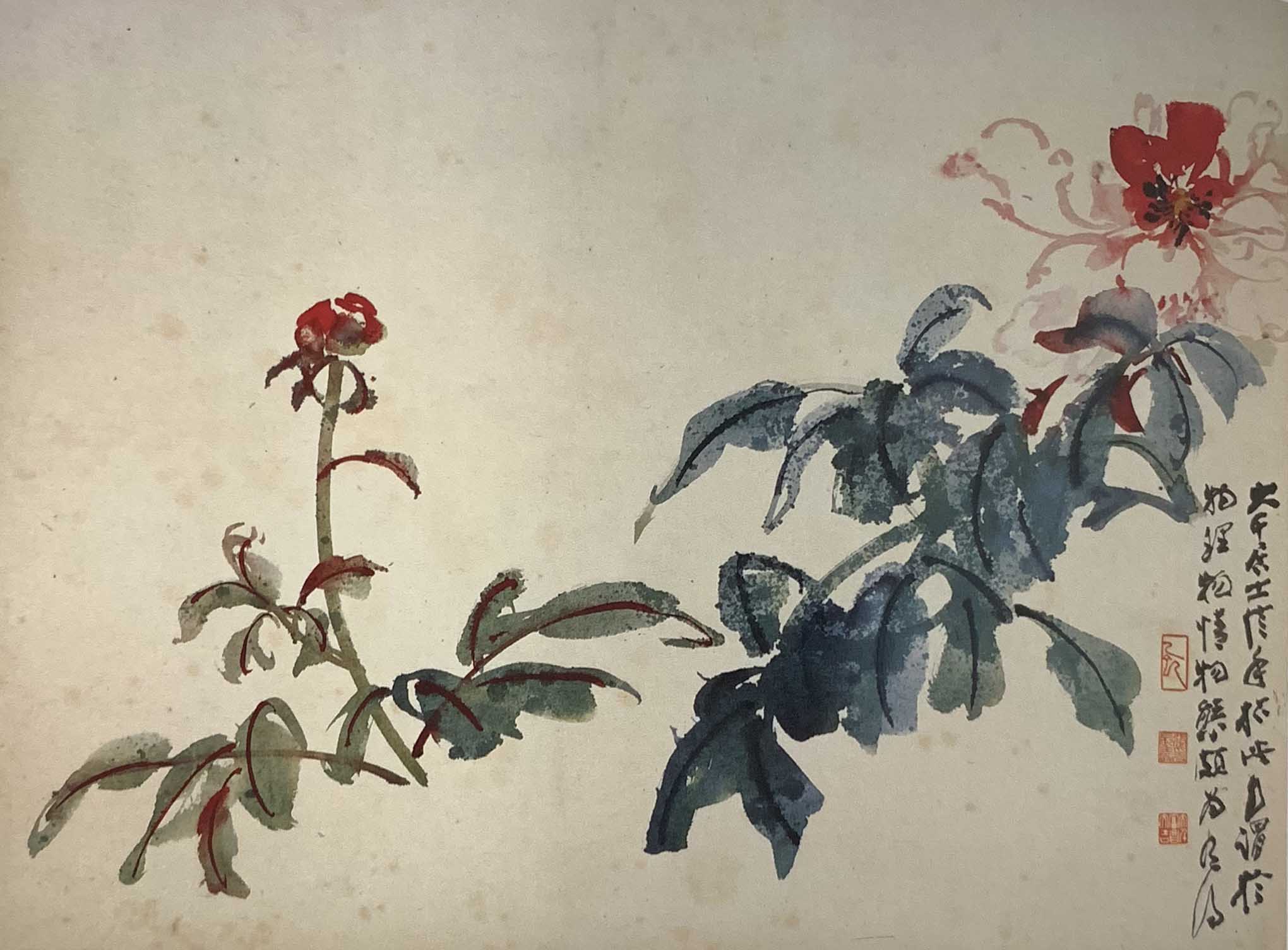
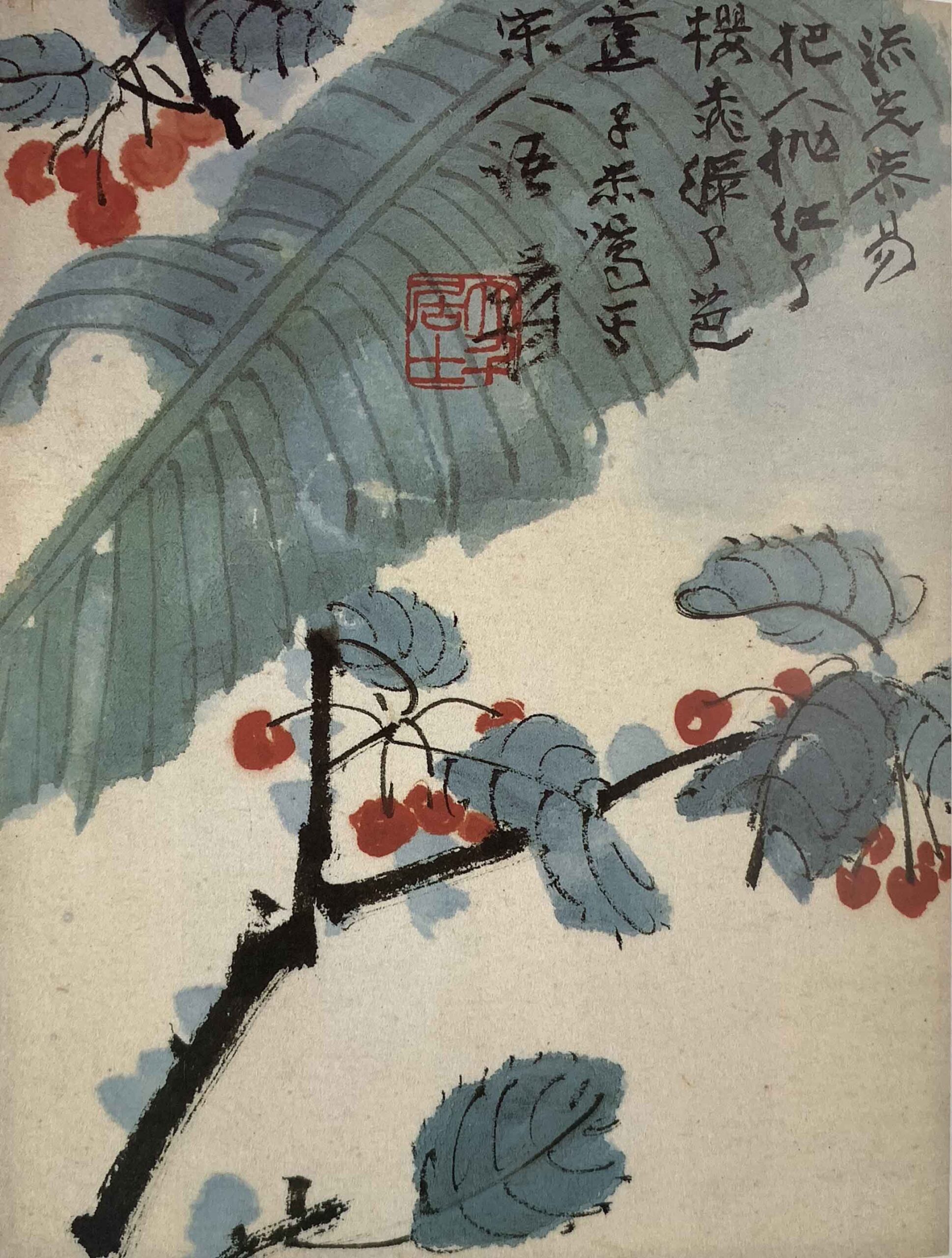
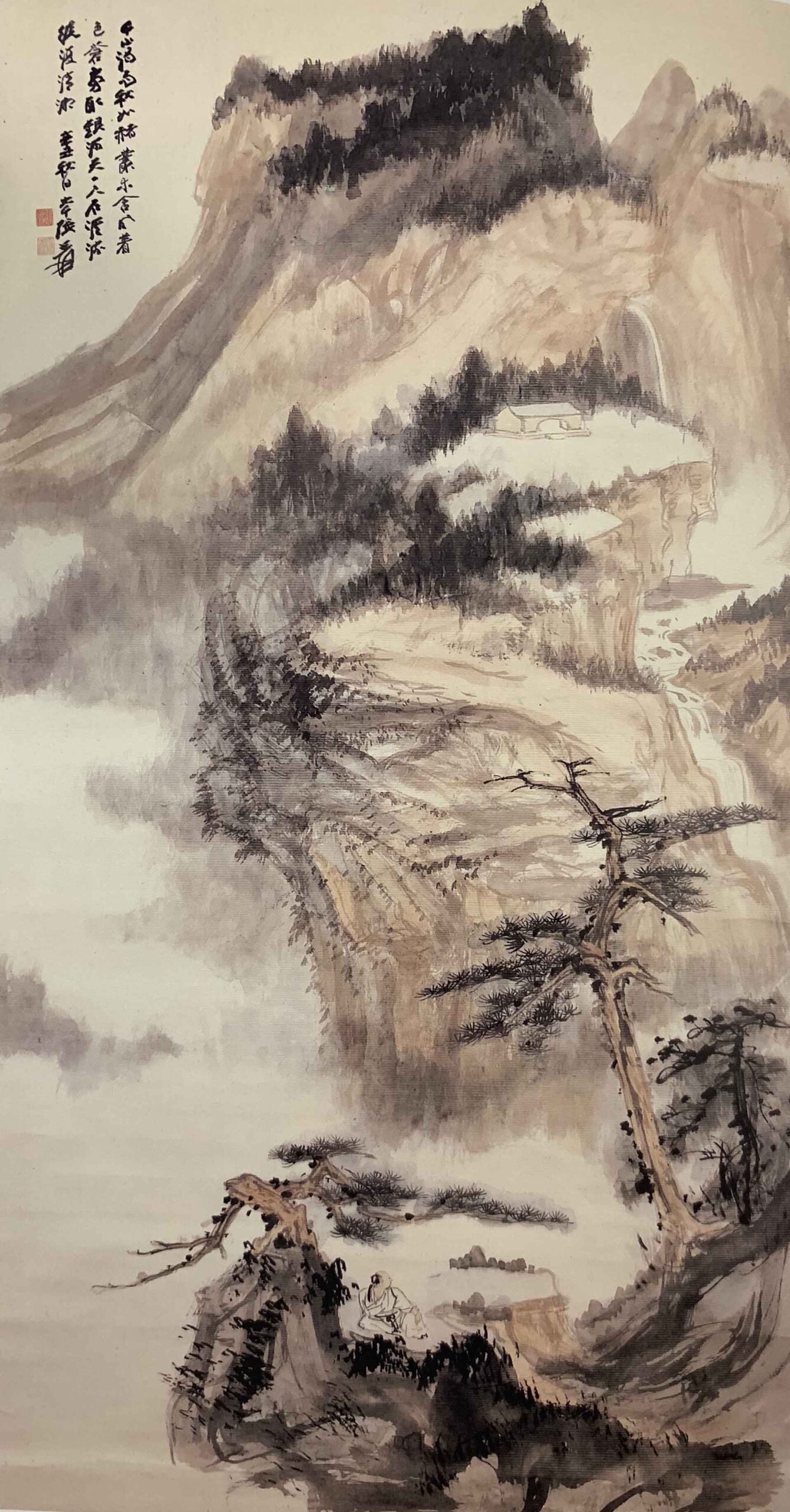
Moye Jingshe's later years
In 1976, Zhang Daqian built the "Moye Jingshe" in Shuangxi, outside Taipei City, as an apartment and creative base. This Chinese-style garden is elegant and quiet, which has become an important witness to Zhang Daqian's artistic later years. Here, he continued to create, teach and lecture, communicate with art friends at home and abroad, and sing poetry and wine until the end of his life.
On April 2, 1983, Zhang Daqian died of a recurrence of heart disease at the age of 84. His "Moye Jingshe" was donated by his family to the National Palace Museum, and the "Mr. Zhang Daqian Memorial Hall" was established to become an eternal space for future generations to remember this giant of Chinese painting.
Zhang Daqian: A master of art who integrates ancient and modern times and dialogues between China and the West
Zhang Daqian's life is the epitome of the inheritance and reform of Chinese art. He studied the ancients deeply and enjoyed the learning of hundreds of people; he also had the courage to innovate and opened a new realm of colorful landscapes. The comprehensive cultivation of poetry, calligraphy, painting and printing, the color inspiration of Dunhuang murals, and the inspiration of western modern art blend with each other, achieving his inclusive and self-contained artistic style.
He said: "Painting is like being a man, you have to have a big heart. "It is precisely because of this broad-minded and fearless spirit of exploration that Zhang Daqian was able to move from the academic background of a small town in Central Sichuan to the stage of the international painting scene and become a far-reaching world-class artist.
Zhang Daqian is not only a master of painting, but also the bearer and regenerator of traditional culture. His works and spirit will always inspire later artists to continue to find their own world in the ancient world of pen and ink.
Zhang Daqian's Masterpiece
- 1971 "You can cross the Top of Emei" (colorful Landscape)
- 1973 "Qingcheng Tianxianyou" Splashing Landscape Map
- 1978 "Autumn Fishing on the Jingse Boat on the Yangtze River" Splashing colorful Landscape Pictures
- In 1979, the "Kuopu Yaoshan Series" splashed colorful Landscape Pictures, "Sungai Outside Moye Jingshe" Splashed colorful landscape pictures, and the huge golden note "Jinbi Splashed Colorful Red Lotus Pictures".
- In 1981, "Sungai Moye Jingshe outside Taipei" splashed colorful landscape Drawings.
- In 1982, "People are in the Immortal Hall" Splashing colorful Landscape drawings, "Chunyun Xiaoai" Splashing colorful Landscape drawings, "The Great Wind Hall" Splashing colorful Landscape drawings, "The Fragrant Lotus in the Water Hall", "Ink Red Lotus"
Zhang Daqian's works
